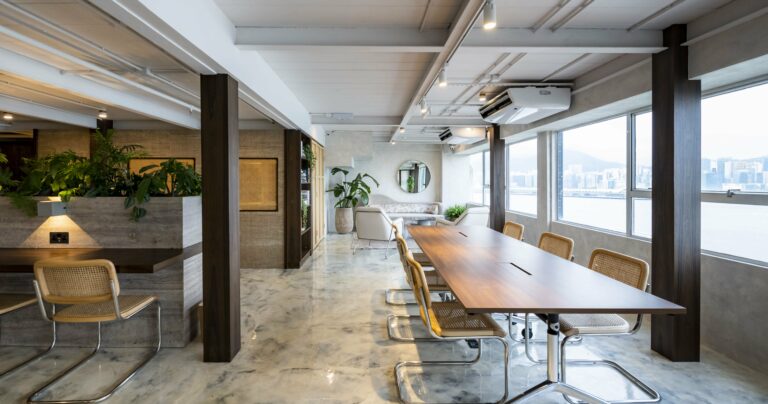Eco-Friendly Furniture For Commercial Co-Living Spaces: A Sustainable Solution?
Today we discuss Eco-Friendly Furniture For Commercial Co-Living Spaces. Is it possible to use eco-friendly furniture in commercial co-living spaces? Definitely! It is not only possible but also increasingly important to find sustainable and environmentally friendly furniture solutions for commercial co-living spaces. With a large number of occupants, comfort, style, and functionality should be prioritized without compromising sustainability.
This article will explore how eco-friendly furniture can be integrated into commercial co-living spaces, discussing the advantages and offering practical ideas for creating a green and welcoming environment that meets the demands of modern living. Let’s discover the possibilities of eco-friendly furniture in commercial co-living spaces.
Eco-Friendly Furniture For Commercial Co-Living Spaces:
Commercial co-living spaces are becoming popular among young professionals and students as a budget-friendly housing choice that fosters community living. Sustainable practices, including eco-friendly furniture, are essential for creating a green living environment in these spaces. This article discusses the advantages, obstacles, and recommended approaches for incorporating eco-friendly furniture in commercial co-living spaces.
Benefits of using eco-friendly furniture:
Eco-friendly furniture offers numerous benefits that make it an ideal choice for commercial co-living spaces. Some of these advantages include:
Reduced environmental impact:
Eco-friendly furniture is crafted using sustainable materials that have a minimal impact on the environment. Manufacturers often use renewable resources, such as bamboo or reclaimed wood, which reduces deforestation and promotes responsible sourcing. Additionally, these materials undergo less processing, leading to reduced energy consumption and lower carbon emissions.
Improved indoor air quality:
Conventional furniture is often made with synthetic materials that can emit harmful chemicals known as volatile organic compounds (VOCs). These chemicals can lead to poor indoor air quality and health issues. In contrast, eco-friendly furniture is typically free from toxic substances, ensuring a healthier living environment for co-living residents.
Durability and longevity:
Eco-friendly furniture is often crafted with high-quality materials and superior craftsmanship, resulting in products that are built to last. This durability not only reduces the need for frequent replacements but also decreases waste generation over the long term.
Aesthetically pleasing:
Eco-friendly furniture is available in various attractive designs and styles, catering to diverse preferences. Whether the co-living space aims for a modern, minimalist look or a cozy, rustic feel, there are eco-friendly furniture options to suit every aesthetic.
Challenges of incorporating eco-friendly furniture in commercial co-living spaces:
While the benefits are substantial, there are also challenges to consider when incorporating eco-friendly furniture into commercial co-living spaces. Some of these challenges include:
Higher upfront costs:
Eco-friendly furniture is often associated with a higher price tag compared to conventional alternatives.
The use of sustainable materials and ethical manufacturing processes contributes to these elevated costs.
However, it’s important to recognize the long-term savings and benefits in terms of durability and reduced environmental impact.
Limited availability:
Although eco-friendly furniture options have been steadily increasing, they are still not as readily available as conventional furniture.
Finding a wide range of styles and designs might be more challenging. However, as demand grows, the availability and variety of eco-friendly furniture are expected to improve.
Maintenance and care:
Some types of eco-friendly furniture may require specific maintenance and care instructions to ensure their longevity.
For example, furniture made from reclaimed wood might need periodic treatment to protect it from moisture or pests.
Proper education and guidelines regarding maintenance would be necessary for co-living residents and staff.
Best practices for using eco-friendly furniture in commercial co-living spaces:
To maximize the benefits of eco-friendly furniture in commercial co-living spaces, it is essential to follow some best practices:
1. Conduct thorough research:
Before investing in eco-friendly furniture, it’s crucial to research and identify reputable manufacturers that prioritize sustainability.
Look for certifications like Forest Stewardship Council (FSC) or eco-labels that guarantee the eco-friendliness of products.
2. Opt for multi-functional pieces:
To optimize space and functionality in co-living environments, consider multi-functional furniture options.
These pieces can serve multiple purposes, such as a sofa that converts into a bed or a collapsible dining table.
This approach minimizes the number of items needed, promoting a clutter-free living environment.
3. Engage residents in sustainability practices:
Educate and involve co-living residents in sustainable practices, including furniture maintenance and responsible consumption.
Encourage them to value and take care of the eco-friendly furniture, promoting a sense of ownership and responsibility towards the environment.
4. Emphasize durability and quality:
Choose eco-friendly furniture known for its durability and quality. Investing in long-lasting pieces reduces the need for frequent replacements, ultimately minimizing waste generation and long-term costs.
5. Explore local and artisanal options:
Consider sourcing eco-friendly furniture from local artisans and craftsmen. Supporting local businesses not only reduces the carbon footprint associated with transportation but also fosters a sense of community and uniqueness in the co-living space.
Faqs for Eco-Friendly Furniture For Commercial Co-Living Spaces:
Using eco-friendly furniture in commercial co-living spaces has many benefits. It reduces the carbon footprint by using sustainably sourced materials, promotes healthier indoor air quality, attracts environmentally conscious residents, and saves costs in the long run due to its durability.
Although eco-friendly furniture may cost more upfront than traditional furniture, it offers long-term benefits and savings. It is durable, reducing the need for frequent replacements. Investing in eco-friendly furniture aligns with sustainability values, enhancing the brand image of a commercial co-living space and attracting residents willing to pay more for these features.
To find eco-friendly furniture for commercial co-living spaces, check furniture retailers with eco-friendly lines, browse online marketplaces specializing in sustainable furniture, and reach out to local artisans for unique options.
Absolutely! Eco-friendly furniture can be just as stylish as conventional furniture. With the increasing demand for sustainable living, furniture designers and manufacturers have embraced the challenge of creating eco-friendly pieces that are both aesthetically pleasing and functional. From sleek and modern designs to rustic and vintage-inspired pieces, there is a wide range of stylish eco-friendly furniture available to suit various commercial co-living space aesthetics and design preferences.
Can eco-friendly furniture be used in commercial co-living spaces?
Yes, eco-friendly furniture can certainly be used in commercial co-living spaces. In fact, it is a growing trend for businesses to opt for eco-friendly options in order to promote sustainability and cater to environmentally conscious individuals. Eco-friendly furniture is made from sustainable materials such as bamboo, reclaimed wood, and recycled plastics. These furnishings are designed to minimize environmental impact without compromising on style or functionality. By incorporating eco-friendly furniture, commercial co-living spaces can create a more sustainable and healthy living environment for their residents.
Final Thoughts
eco-friendly furniture can indeed be used in commercial co-living spaces. Its sustainable nature aligns with the growing demand for environmentally conscious practices, offering a unique selling point for businesses operating in this space. Incorporating eco-friendly furniture not only benefits the planet but also creates a healthier and more aesthetically pleasing living environment for the residents. By considering factors such as durability, functionality, and design, commercial co-living spaces can successfully integrate eco-friendly furniture, fostering a sustainable and comfortable living experience for all.

